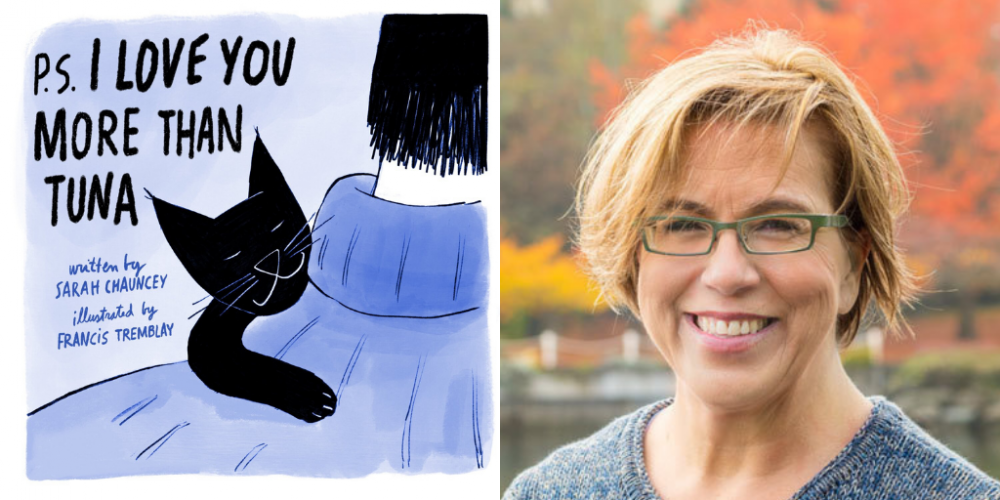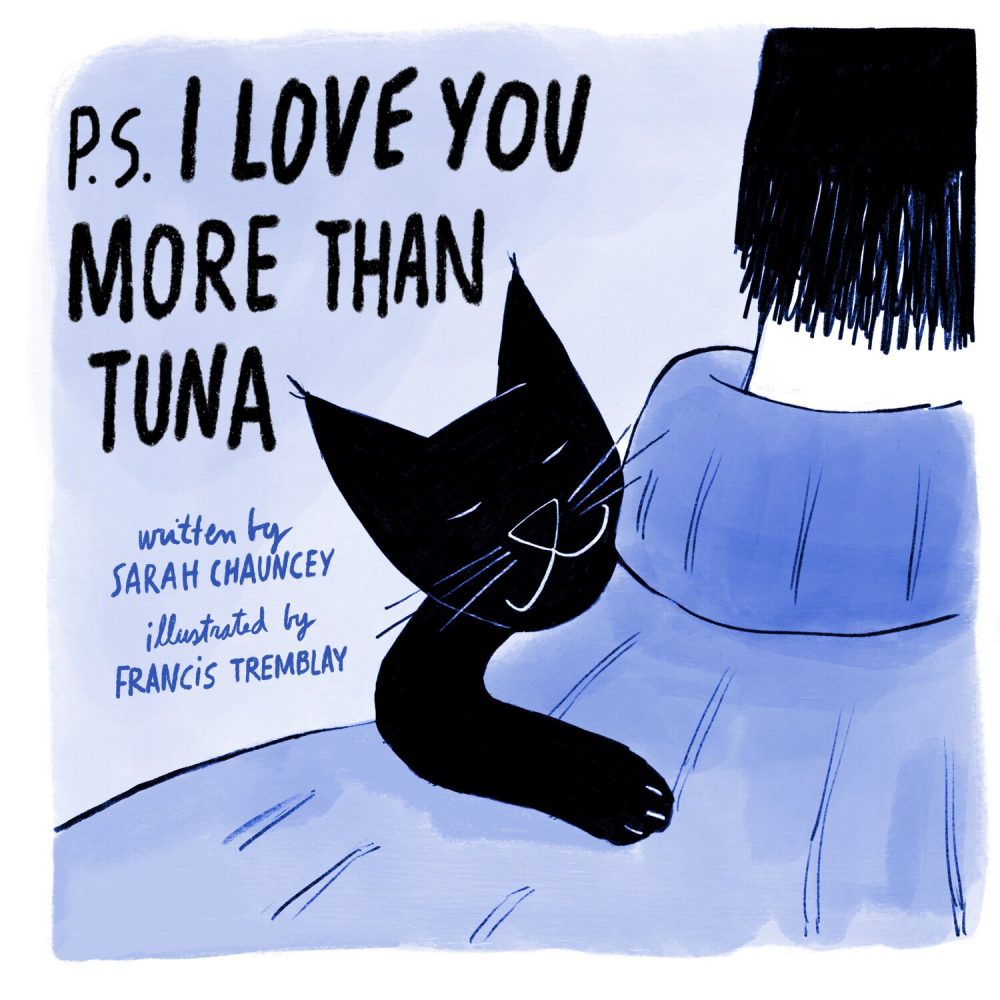
I first met author Sarah Chauncey when we consulted in May 2018. After a 25-year career in writing and editing, she had written her first book, an illustrated gift book for adults who are grieving the loss of a cat. But Sarah didn’t realize that gift books require a platform. Luckily, she was able to interest an agent anyway, who—rather than reject Sarah’s project out of hand—told her to go and build a platform. Once that was accomplished, the agent promised she’d put the book on submission.
Some of you may know my opinion on this matter: it is very hard to write a book then successfully build a platform for it. Usually the book grows out of having a platform. But Sarah was not deterred. By 2019, Sarah had developed a growing and engaged audience, and her agent sold More Than Tuna to Sounds True. In the following Q&A, I ask Sarah about some of the most challenging aspects of writing and publishing a gift book like More Than Tuna.
Jane Friedman: I’ll start by stating the obvious: a lot of people lose their cats on any given day of the week. But they don’t end up writing a gift book about it. This is your first book, too, which makes this an unusual situation. Can you tell us about the critical moments that led you to write this and then look for an agent?
Sarah Chauncey: In December 2016, two days after my cat Hedda died, my friend Dianna’s husband, Francis, sent me a drawing of Hedda with a note “from” her that ended “P.S. I love you more than tuna.” I bawled, of course, and then I thought, “That would make a great book title.”
The whole story is kind of amazing—I’d never planned to write a picture book, nor a “cat book.” Five months after I received Francis’ gift, I learned I’d have to leave my home of nine years. I did a six-month live-work exchange at a center that hosted meetings and retreats, which was much less peaceful than it sounds (LOL).
I’d planned to turn my passion project, a blog about finding inner peace (Living the Mess), into an ebook or course, but I quickly realized I wouldn’t be able to work on it in a conference center environment. A little voice nudged me to work on Tuna. I joined QueryTracker, and my (eventual) agent’s listing asked for a full proposal. I wrote one, and Francis drew sample illustrations.
In my research, I calculated that 5.5 million domestic cats die each year in the United States. On any given day, an average of 15,000 Americans have to say goodbye to a cat they love. I naively believed that meant the book would sell itself, and that I wouldn’t have to build a platform. Whoops!
How did you build your platform—and how long did it take?
I’d actively avoided “visibility” for years. I signed with my agent in the fall of 2017, then spent all of 2018 trying to figure out how to build a platform that could encompass the three branches of my business: editing commercial and literary nonfiction, Living the Mess (broadly speaking, mindfulness/nature), and Tuna.
The first big step was building online communities. I was already connected to several people in the cat rescue community on Instagram, so that was a natural place to start. On Facebook, I started a More Than Tuna page and whenever I could afford it, I boosted original posts (like this one). I also promoted the page to people with cat-related interests (a level of granular targeting that’s no longer available). My intent was simply to let people know the page existed.
From the beginning, one of my goals for Tuna was to help people appreciate the time they do have with their cats. By pitching outlets that bridged all three of my strands—for example, Lion’s Roar, a Buddhist magazine—I was able to weave my long-term intentions (e.g., writing about inner peace) into the Tuna platform. By placing essays rather than, say, listicles, I was able to show potential editing clients that I can write. Essays are much harder and more time-consuming for me, but it was worth it.
I pitched a series of essays to Ingrid King of The Conscious Cat, whose audience aligns well with Tuna. I’ve now written eight or nine guest posts for her site. She not only enthusiastically agreed, she has continued to use her considerable platform (225,000 Facebook fans) to promote the book.
I also pitched dozens of articles to targeted mainstream outlets. I received three acceptances, of which one was killed; two “please pitch again” passes; and otherwise…crickets.
How did you decide your platform was big enough? Or did the agent tell you, hey, you’re done and let’s go on submission!
The latter. We went on submission at the end of May 2019, accepted an offer at the end of June, and had a signed contract by mid-October. The whole process was almost exactly two years from agent signing to book contract.
My agent represents some authors and author-illustrators with truly huge platforms (multiple millions of social followers). I’ve always been keenly aware that, platform-wise, I’m a minnow on a list of blue whales. Those people made it possible for her to take a chance on me. Understanding that helped me have patience (and gratitude).
A big obstacle for many writers who want to do an illustrated book (for adults anyway) is that they’re not an illustrator and they don’t know how to go about finding one. Tell us about working with Francis on this.
Conventional wisdom, which our submissions process bore out, is that it’s better for writers to submit without an illustrator in mind. Publishers like to make their own contribution to a book, typically by bringing in an illustrator they know and like. So a writer with no illustrator is actually in a strong position.
In our case, Tuna began with an illustration—the gift Francis sent me after Hedda died. That was one of several reasons that I felt strongly he was the right illustrator for this project. There was a stretch when he didn’t think he’d be able to do the book, and I continued on my own for six months, but I just couldn’t imagine this book with any other illustrator.
We did receive several passes along the lines of “the illustrations are too playful/don’t match the text/we don’t really get them”—which, to me, said that they didn’t ‘get’ the overall vision. That’s fine; it just meant that they weren’t the right publisher for this book.
Francis and I had previously discussed working on a book together, but we’d never found the right material. As he now says, “This book found us.”

Jane Friedman has spent nearly 25 years working in the book publishing industry, with a focus on author education and trend reporting. She is the editor of The Hot Sheet, the essential publishing industry newsletter for authors, and was named Publishing Commentator of the Year by Digital Book World in 2023. Her latest book is The Business of Being a Writer (University of Chicago Press), which received a starred review from Library Journal. In addition to serving on grant panels for the National Endowment for the Arts and the Creative Work Fund, she works with organizations such as The Authors Guild to bring transparency to the business of publishing.


Loved this article, Jane! Glad to hear about your success and how you built it, Sarah Chauncey. I appreciate how you describe the overlap with this book and your other work, weaving the strands of your work together. That’s really helpful for me to think about. Also, I love your perspective about the publishers who didn’t like the illustrations! I’m going to steal this. Instead of feeling rejected/sad, just knowing that this wasn’t the right fit.